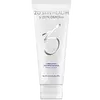What's inside
What's inside
 Key Ingredients
Key Ingredients

 Benefits
Benefits

 Concerns
Concerns

 Ingredients Side-by-side
Ingredients Side-by-side

Water
Skin ConditioningKaolin 12%
AbrasiveGlycerin
HumectantPropanediol
SolventCaprylic/Capric Triglyceride
MaskingTitanium Dioxide
Cosmetic ColorantSilica
AbrasiveBehenyl Alcohol
EmollientBentonite 1.5%
AbsorbentMyristyl Alcohol
Emollient1,2-Hexanediol
Skin ConditioningButylene Glycol
HumectantNiacinamide
SmoothingPolysorbate 60
EmulsifyingCellulose
AbsorbentCetearyl Olivate
Sodium Polyacryloyldimethyl Taurate
Emulsion StabilisingTromethamine
BufferingSorbitan Olivate
EmulsifyingHydroxyacetophenone
AntioxidantPolyacrylate Crosspolymer-6
Emulsion StabilisingSorbitan Sesquioleate
EmulsifyingGluconolactone
Skin ConditioningSalicylic Acid
MaskingHydrogenated Polydecene
EmollientCellulose Gum
Emulsion StabilisingParfum
MaskingXanthan Gum
EmulsifyingAluminum Hydroxide
EmollientHectorite
AbsorbentHydroxyethyl Urea
HumectantCentella Asiatica Extract
CleansingEthylhexylglycerin
Skin ConditioningDisodium EDTA
Lactic Acid
BufferingLactobacillus Ferment
Skin ConditioningTrideceth-10
CleansingHyaluronic Acid
HumectantHydrolyzed Hyaluronic Acid
HumectantSodium Hyaluronate
HumectantCeramide NP
Skin ConditioningHydrogenated Lecithin
EmulsifyingPolygonum Fagopyrum Seed Extract
Skin ConditioningGlycyrrhiza Glabra Root Extract
BleachingGlycine
BufferingSerine
MaskingGlutamic Acid
HumectantAspartic Acid
MaskingLeucine
Skin ConditioningAlanine
MaskingLysine
Skin ConditioningArginine
MaskingTyrosine
MaskingPhenylalanine
MaskingProline
Skin ConditioningThreonine
Valine
MaskingIsoleucine
Skin ConditioningHistidine
HumectantCysteine
AntioxidantMethionine
Skin ConditioningHydrolyzed Vegetable Protein
Skin ConditioningMaltodextrin
AbsorbentWater, Kaolin 12%, Glycerin, Propanediol, Caprylic/Capric Triglyceride, Titanium Dioxide, Silica, Behenyl Alcohol, Bentonite 1.5%, Myristyl Alcohol, 1,2-Hexanediol, Butylene Glycol, Niacinamide, Polysorbate 60, Cellulose, Cetearyl Olivate, Sodium Polyacryloyldimethyl Taurate, Tromethamine, Sorbitan Olivate, Hydroxyacetophenone, Polyacrylate Crosspolymer-6, Sorbitan Sesquioleate, Gluconolactone, Salicylic Acid, Hydrogenated Polydecene, Cellulose Gum, Parfum, Xanthan Gum, Aluminum Hydroxide, Hectorite, Hydroxyethyl Urea, Centella Asiatica Extract, Ethylhexylglycerin, Disodium EDTA, Lactic Acid, Lactobacillus Ferment, Trideceth-10, Hyaluronic Acid, Hydrolyzed Hyaluronic Acid, Sodium Hyaluronate, Ceramide NP, Hydrogenated Lecithin, Polygonum Fagopyrum Seed Extract, Glycyrrhiza Glabra Root Extract, Glycine, Serine, Glutamic Acid, Aspartic Acid, Leucine, Alanine, Lysine, Arginine, Tyrosine, Phenylalanine, Proline, Threonine, Valine, Isoleucine, Histidine, Cysteine, Methionine, Hydrolyzed Vegetable Protein, Maltodextrin
Ingredients Explained
These ingredients are found in both products.
Ingredients higher up in an ingredient list are typically present in a larger amount.
Bentonite is an aluminium phyllosilicate clay with great absorbent properties. The name 'bentonite' comes from the area where the largest source is found: Fort Benton, Wyoming.
As a clay, bentonite is often used to absorb excess oil and provide exfoliation. It has also been shown to have some antibacterial and anti-inflammatory properties. Studies show bentonite was effective at calming dermatitis from poison ivy and in diaper dermatitis of infants. Bentonite has also been shown to act as a barrier against toxic compounds on your skin.
Sunscreens containing bentonite display higher water resistance and stay on the skin for much longer. The sunscreens containing bentonite also show higher potency and UV light absorbtion.
Bentonite is naturally created from volcanic ash and several natural weathering/hydrothermal processes.
A common usage of bentonite is removing excess protein from white wines. Bentonite contains a property of being able to absorb large amounts of protein from aqueous solutions.
Phyllosilicate clay has a structure formed by sheets.
Learn more about BentoniteGlycerin is already naturally found in your skin. It helps moisturize and protect your skin.
A study from 2016 found glycerin to be more effective as a humectant than AHAs and hyaluronic acid.
As a humectant, it helps the skin stay hydrated by pulling moisture to your skin. The low molecular weight of glycerin allows it to pull moisture into the deeper layers of your skin.
Hydrated skin improves your skin barrier; Your skin barrier helps protect against irritants and bacteria.
Glycerin has also been found to have antimicrobial and antiviral properties. Due to these properties, glycerin is often used in wound and burn treatments.
In cosmetics, glycerin is usually derived from plants such as soybean or palm. However, it can also be sourced from animals, such as tallow or animal fat.
This ingredient is organic, colorless, odorless, and non-toxic.
Glycerin is the name for this ingredient in American English. British English uses Glycerol/Glycerine.
Learn more about GlycerinKaolin is a clay. It is used for oil control and to help minimize pores. Like other clays, kaolin has the ability to absorb excess sebum or oil. This can help clean out pores and mattify the skin.
Some types of kaolin may have exfoliating properties. When water is added to kaolin, it becomes a paste with small abrasive particles.
Most kaolin is a white color, but may be pink/orange/red depending on where it comes from.
The name 'kaolin' comes from a Chinese village named 'Gaoling'. Kaolin clay comes from rocks rich in kaolinite. Kaolinite, the mineral, has a silicate layered structure. Kaolinite is formed from chemical weathering of aluminum siilicate minerals.
Besides skincare, kaolin is commonly used to make glossy paper, in ceramics, toothpaste, and as medicine to soothe stomach issues.
Learn more about KaolinSilica, also known as silicon dioxide, is a naturally occurring mineral. It is used as a fine, spherical, and porous powder in cosmetics.
Though it has exfoliant properties, the function of silica varies depending on the product.
The unique structure of silica enhances the spreadability and adds smoothness, making it a great texture enhancer.
It is also used as an active carrier, emulsifier, and mattifier due to its ability to absorb excess oil.
In some products, tiny microneedles called spicules are made from silica or hydrolyzed sponge. When you rub them in, they lightly polish away dead skin layers and enhance the penetration of active ingredients.
Learn more about SilicaWater. It's the most common cosmetic ingredient of all. You'll usually see it at the top of ingredient lists, meaning that it makes up the largest part of the product.
So why is it so popular? Water most often acts as a solvent - this means that it helps dissolve other ingredients into the formulation.
You'll also recognize water as that liquid we all need to stay alive. If you see this, drink a glass of water. Stay hydrated!
Learn more about Water